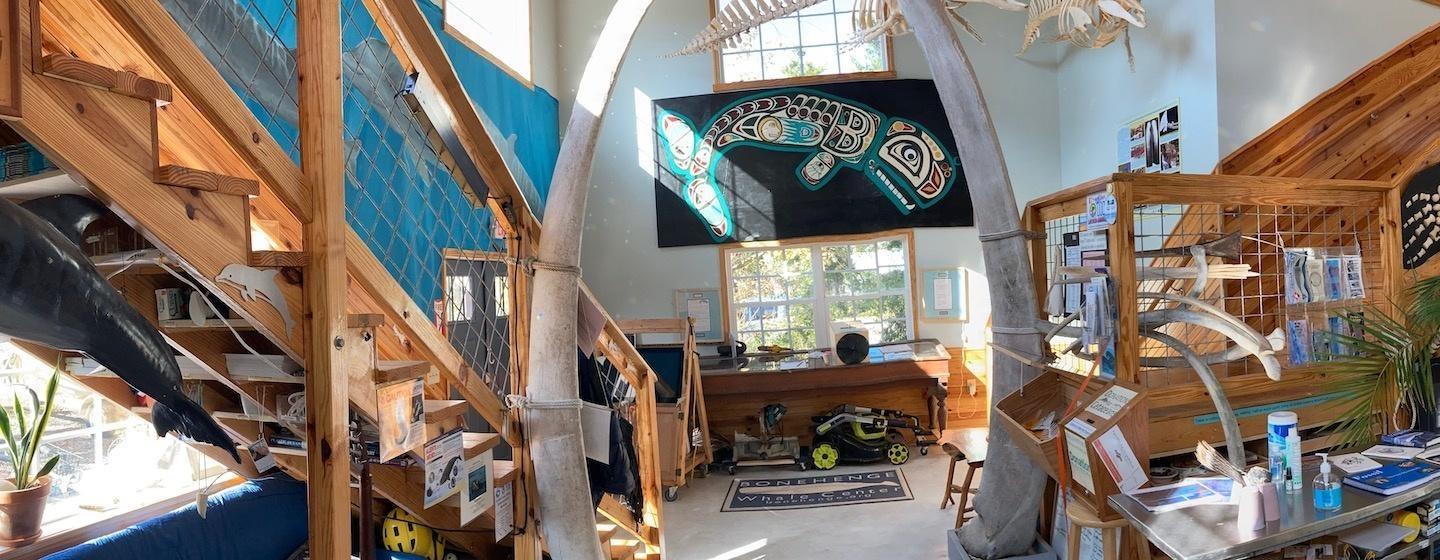Introducing Bonehenge Whale Center


It could be the coolest place you’ve never heard about. And there’s a good reason for that.
It’s taken 289 donors and 78 volunteers from 17 states and 5 countries to make Bonehenge Whale Center happen. The Beaufort facility has been in the works for more than a decade.
The idea for a center focusing on NC cetaceans (whales, dolphins and porpoises) started small.
“Because of our location near ocean currents, the continental shelf, and many other reasons, North Carolina is a hotspot for cetacean diversity on a global scale and we wanted to explain that,” said Keith Rittmaster, Natural Sciences Curator at the North Carolina Maritime Museum and one of the leaders in the effort to create Bonehenge Whale Center. “And quite frankly, these creatures are amazing and I get excited when people learn about them and say WOW!”
Actually, the idea for Bonehenge Whale Center didn’t start out that small. To understand, you must go back to January 31, 2004.
That’s when a 33.5 foot sperm whale stranded alive and then died at Cape Lookout.
Ritttmaster responded to the stranding as part of the Marine Mammal Stranding Network. While the whale couldn’t be helped, Rittmaster and others thought the skeleton would make a tremendous display and learning opportunity for the maritime museum.
The group buried the bones for four years, then exhumed the bones and custom built a building to prepare the bones and rearticulate the skeleton. They named the building BONEHENGE. The skeletal sperm whale display (named Echo) opened at the NC Maritime Museum in Beaufort in March, 2012.
But volunteers wanted to go further, and the idea of Bonehenge Whale Center was launched. Plans were drawn, fundraisers were held, land was purchased. Ground was broken in May, 2018. The facility opened in September, 2021.
The facility is an entirely grassroots, volunteer, donor supported project.
“I’m still amazed it all came together,” Rittmaster said while laughing in amazement. “But we have quite a story to tell.”
It turns out Carteret County was home to a dolphin and whale hunting industry. It was primarily for oil. Historical records aren’t clear how large the industry was.
The industry was founded because there are plenty of cetacean species off the coast. As of 2021, the whale center has documented 34 species of cetaceans (all whales, including dolphins and porpoises) along with the Florida manatee and 4 seal species.
Visitors to the center will see two displays of beaked whale skeletons (Plus another being prepped for display) a 37-foot humpback whale skeleton, plus whale teeth, baleen, and whale oil.
But here’s the thing. Bonehenge Whale Center is more of a workshop than a museum because it is not staffed on a regular basis. Remember, it’s all volunteer.
However on April 8, 2022, the North Carolina Maritime Museum is holding an open house at Bonehenge as part of the North Carolina Science Festival.
“Who isn’t amazed by whales, dolphins and porpoises because they are beautiful, intelligent and just cool,” said Jonathan Frederick, Director of the North Carolina Science Festival. “Bonehenge Whale Center is one of those hidden science gems we like to feature in the Festival.”
To find the Bonehenge open house and other 2022 North Carolina Science Festival Events, visit ncsciencefestival.org.
Email bonehengewhalecenter@gmail.com or call 252-528-8607 to plan a visit at some other time. Volunteers are glad to help coordinate schedule. The museum is located at 275 W Beaufort Rd Ext Beaufort, NC 28516.